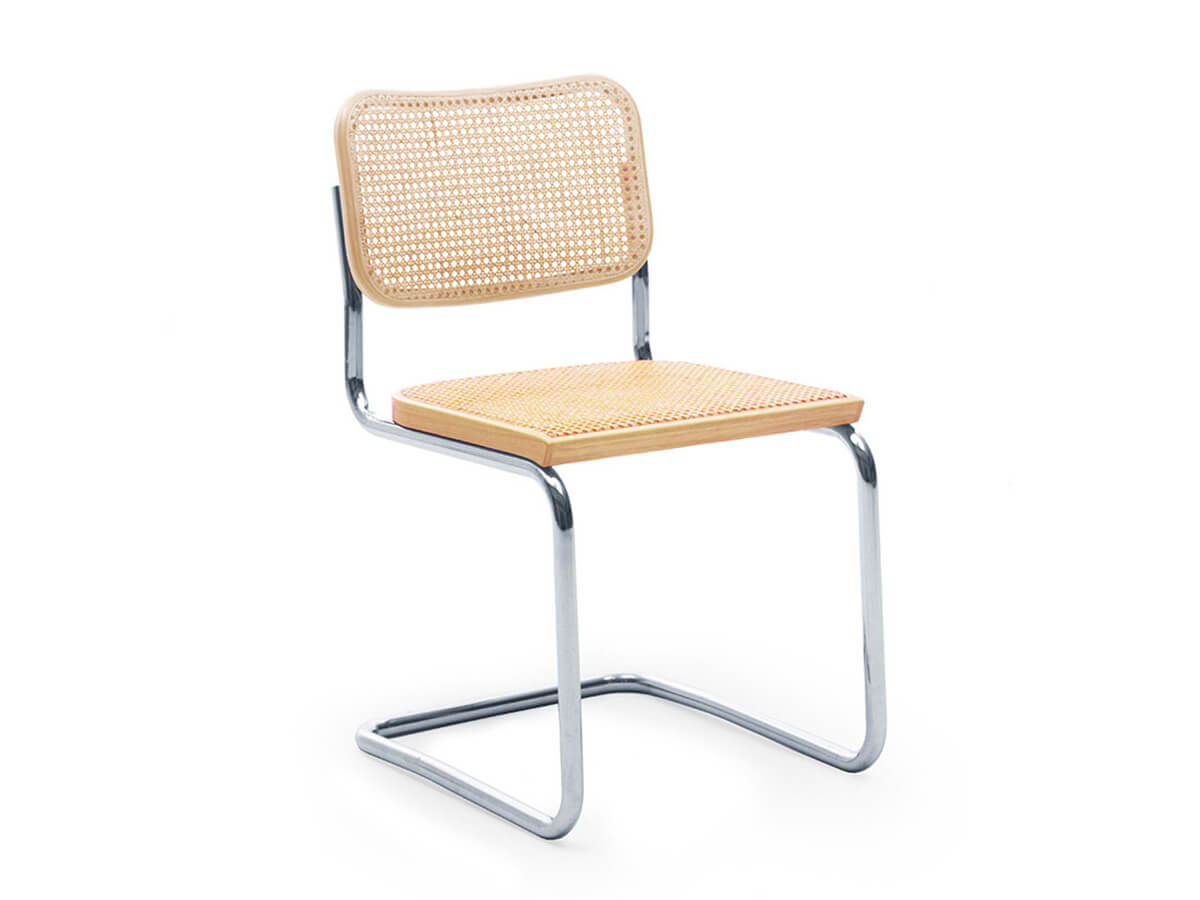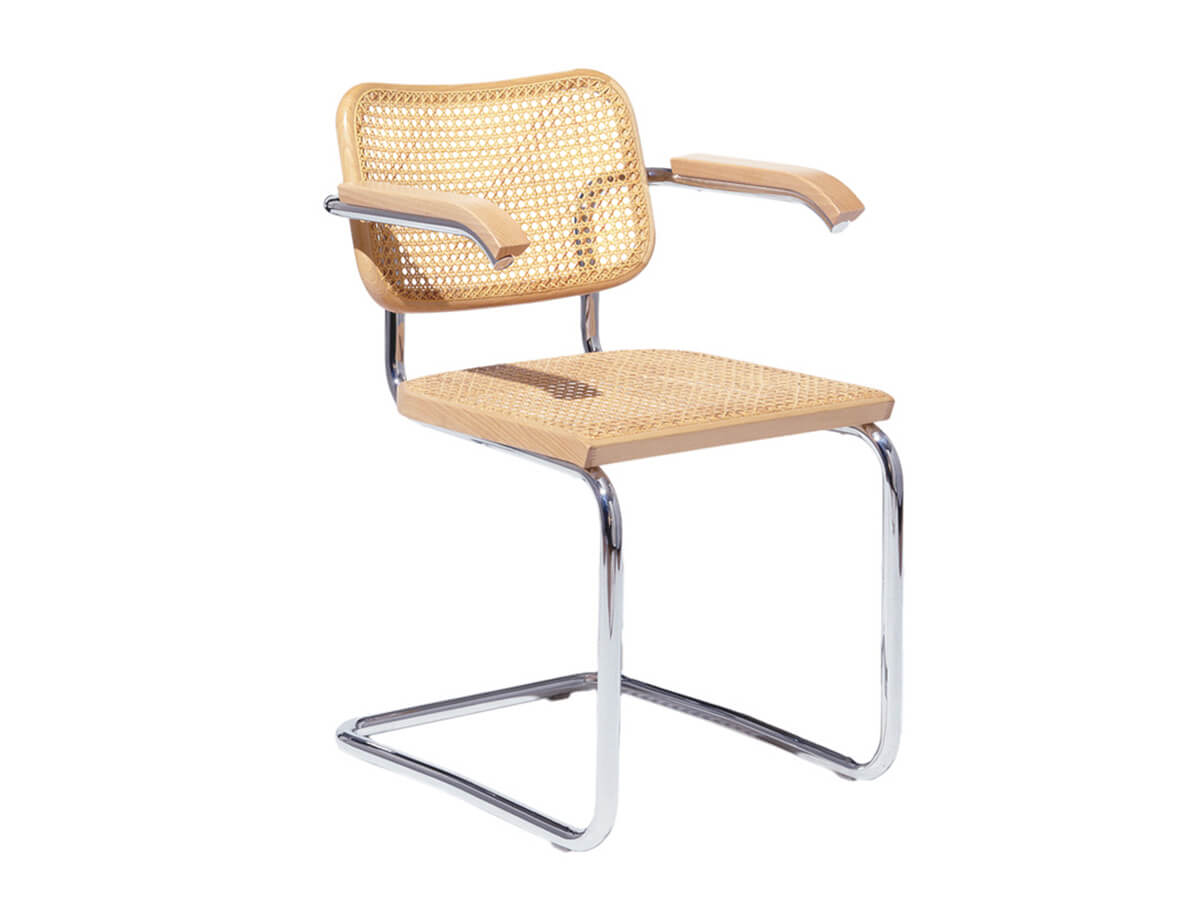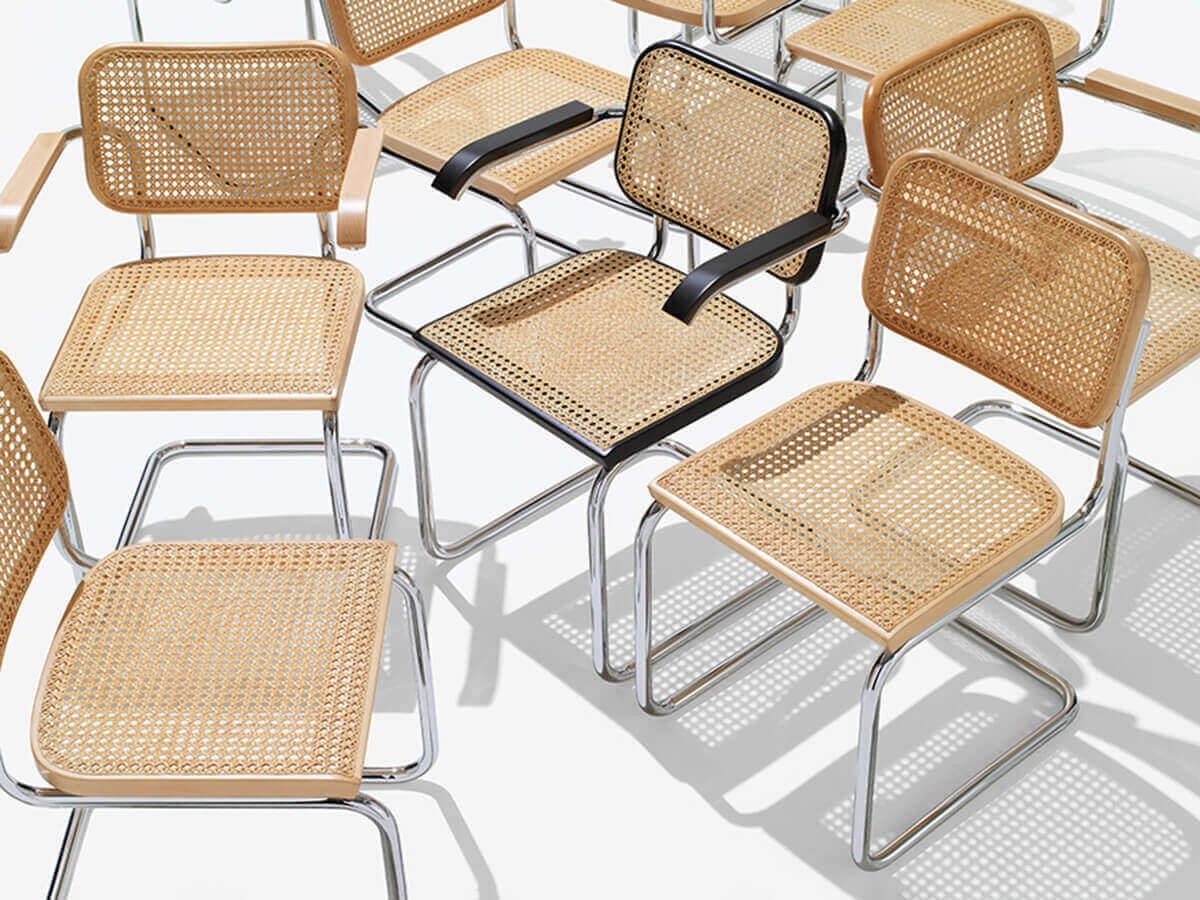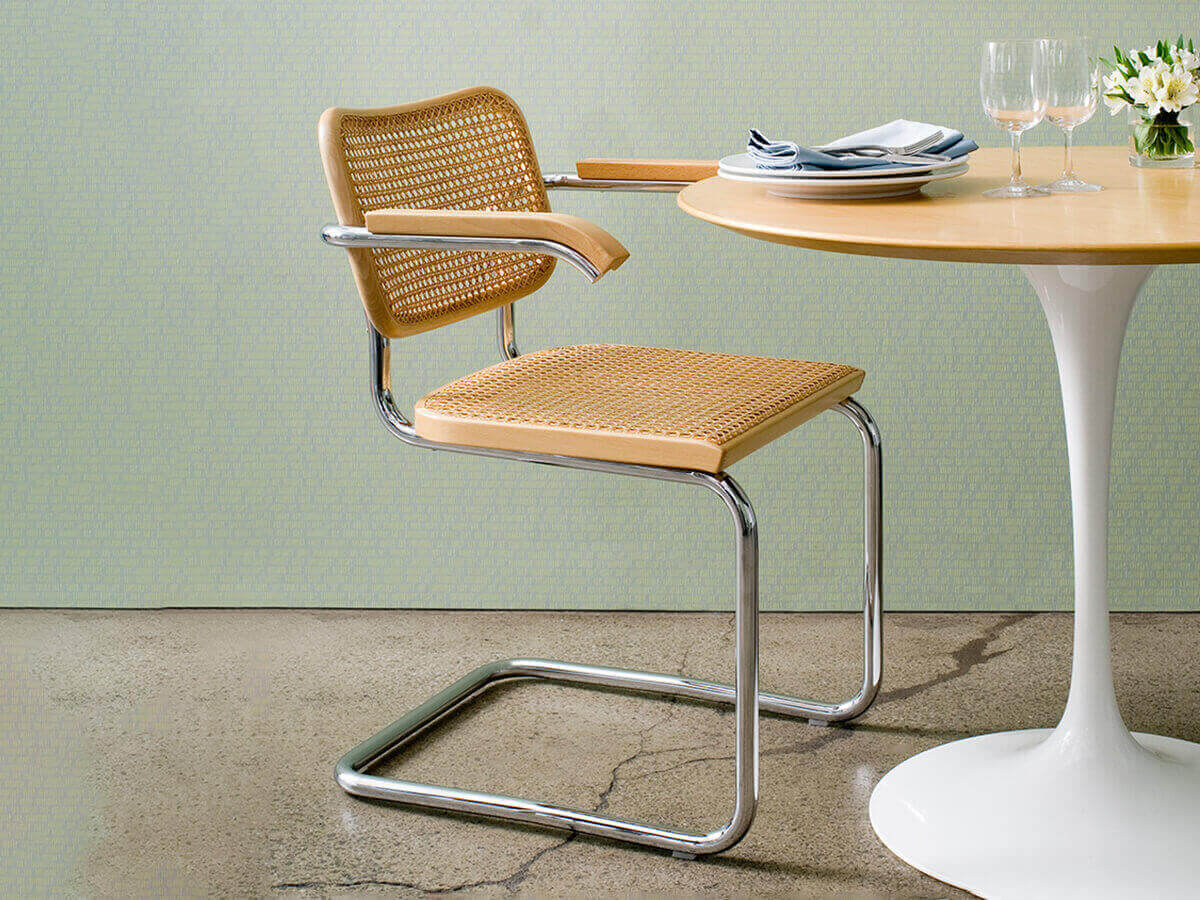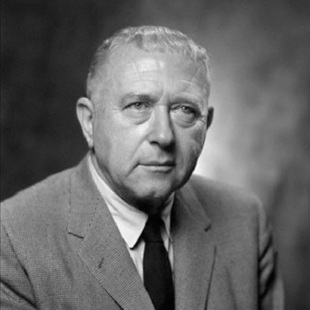Knoll
Cesca Chair
Price starting from € 1.830,00*
*Price valid for the version without armrests in black varnished beechwood and hand-made cane inserts (cod. 50 CC1 E)
Cesca represents a timeless classic, capable since 1929 of surviving in the multiplication of variants and solutions that nevertheless never change its original soul. Composed of a single tubular steel frame with seat and backrest, the Cesca chair is originally produced with the prestigious and iconic Vienna straw. Solid and elegant, this model was ahead of its time, showing off how steel, at the time considered a cold and industrial material, could also adapt well to the needs of interior design. Today Cesca is present both in private environments and in contract areas, useful for creating an environment of great stylistic value.
W.46 x D.58 x H.80 cm
Seat Height 46 cm
Salvioni Design Solutions delivers all around the world. The assembly service is also available by our teams of specialized workers.
Each product is tailor-made for the personal taste and indications of the customer in a customized finish and that is why the production time may vary according to the chosen product.
To discover the full range of services available, visit our delivery page.
Personalize your request
Frame
Select
Armrests (Optional)
Select
Select
Landed in the United States at the beginning of the ‘30s, Hans Knoll, a young German-born son of a furniture-maker in Stuttgart, proposed to import into the new continent the modern European design, contemporary heritage of the Bauhaus. Died prematurely, his work was continued by his wife, Florence Knoll, who succeeded in establishing lasting partnerships with some of the greatest exponents of the modernist movement. Few years later the Knoll Associates was founded. Today, Knoll is not only a company of re-selling historic furnishings of great artistic value, but continues to innovate by offering creations of the major international design brands both in the home area and in the office furnitures sector.Read more
Designed by
Marcel Breuer
Marcel Breuer (1902-1981), Hungarian architect and designer, was one of the great protagonists of the Bauhaus. After being a pupil of the Bauhaus School in Weimar, he was chosen at a very young age by the director Walter Gropius to manage the school's furniture workshop. He therefore has the opportunity to experience as a protagonist an inimitable season of creative ferments, in which the very concept of “modern furniture” takes shape. His creations of the time feature an innovative material such as tubular metal, to which Breuer manages to give an unusual elegance, and will find the way to mass production thanks to the Thonet company. With the coming to power of Nazism, Breuer, of Jewish origin, was forced to flee abroad, first taking refuge in London for a few years (during which he was able to create furniture for the Isokon brand) and then following his mentor Gropius in the United States. There he became a professor of architecture at Harvard University and began an intense and successful activity as an architect, with works such as the Whitney Museum of American Art in Manhattan or the Hooper House in Baltimore. In the 1960s he met the brilliant Italian entrepreneur Dino Gavina who convinced him to put his furniture back into production for the Gavina company (which was then sold to Knoll a few years later).Read more
